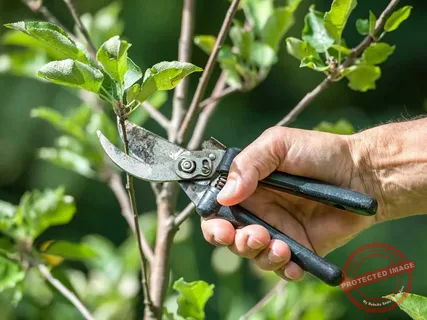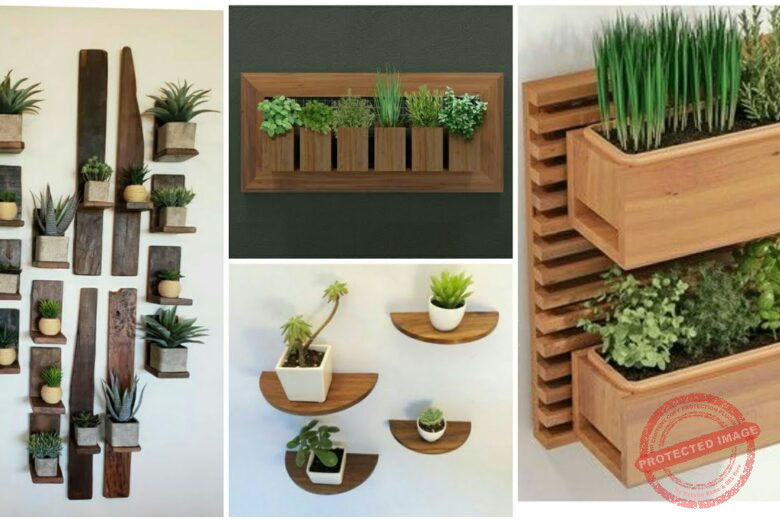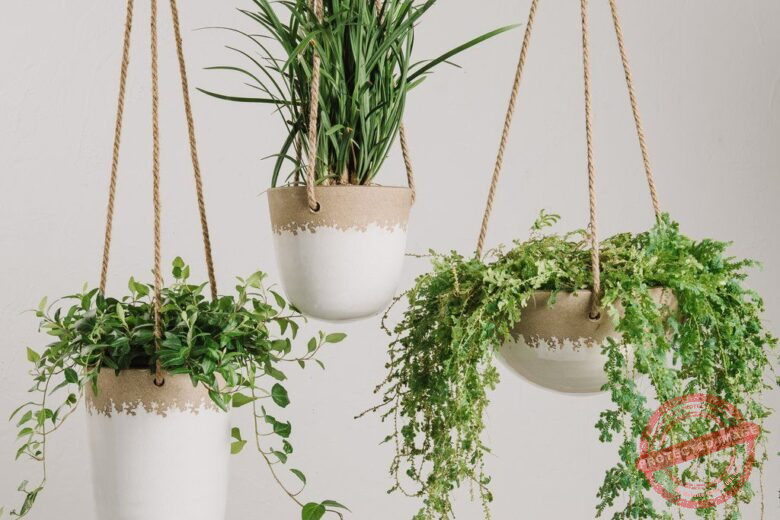Planting Salvias might come with its challenges. So, today we will be looking at how you can fix Problems with Salvias in you garden.
Salvias are a gardener’s delight, known for their vibrant flowers and ability to attract pollinators like bees, butterflies, and hummingbirds.
However, one common issue many gardeners face is dealing with floppy salvias. If your salvias aren’t standing tall and proud, don’t worry—you’re not alone. Let’s explore what salvias are, why they can become floppy, and how to fix the problem.
Before we start talking about how to fix some of this issues lets first look at what the plant is all about.
What Are Salvias?
Salvias, also known as sages, are part of the Lamiaceae family. They come in both perennial and annual varieties and are loved for their aromatic leaves and colorful, tubular flowers.
These flowers can be blue, purple, red, pink, or white, adding a burst of color to any garden. Here are a few popular types of salvias:
- Salvia nemorosa (Wood Sage): Known for its violet-blue flower spikes.
- Salvia greggii (Autumn Sage): Offers bright red, pink, or white flowers and is especially popular in warmer climates.
- Salvia splendens (Scarlet Sage): A common annual with bright red blooms.
- Salvia officinalis (Common Sage): Often used in cooking, it has gray-green leaves and purple flowers.
- Salvia leucantha (Mexican Bush Sage): Features velvety purple and white flowers.
Why Gardeners Love Salvias
Salvias are not only beautiful but also quite tough. They are drought-tolerant, deer-resistant, and easy to care for, making them perfect for various garden settings. They thrive in full sun and well-drained soil, and they can enhance garden beds, borders, and containers with their lively colors and textures.
Read Also: 25 Common Diseases of Goats and How to Treat them
Understanding the Problem: Why Do Salvias Flop?
1. Insufficient Sunlight
Salvias love the sun. When they don’t get enough, they tend to grow tall and weak, causing them to flop over. Make sure your salvias get at least six hours of direct sunlight each day.
2. Overwatering
Too much water can make the stems weak and cause excessive foliage growth, leading to top-heavy plants that can’t support themselves. Salvias prefer well-drained soil and can handle drought better than being waterlogged.
3. Poor Soil Conditions
Soil that’s too rich in nitrogen can cause lush foliage at the expense of strong stems. On the other hand, soil that’s too poor can stunt growth and weaken the plants, making them prone to flopping.
4. Lack of Pruning
Pruning helps maintain the shape and strength of salvias. Without regular trimming, they can become overgrown and floppy.
5. Heavy Blooms
While lots of flowers are usually a good thing, they can make the stems flop if they’re too heavy for the plant to support.
How to Fix Floppy Salvias
1. Ensure Adequate Sunlight
Check where your salvias are planted. If they’re not getting enough sunlight, consider moving them to a sunnier spot. You can also trim nearby plants or structures that might be casting shadows.
2. Adjust Your Watering Practices
Reevaluate how often you water your salvias. Let the soil dry out between waterings to encourage deeper root growth and stronger stems. Using a soaker hose or drip irrigation can help provide consistent moisture without waterlogging the soil.
3. Improve Soil Quality
Test your soil to understand its composition. Adding organic matter like compost can improve drainage and fertility. Avoid high-nitrogen fertilizers; instead, use balanced or slow-release options to promote healthy growth.
4. Regular Pruning
Pruning not only keeps salvias looking good but also encourages strong growth. Deadhead spent flowers to encourage more blooms, and trim the stems by about one-third after the first flowering. This helps the plant grow bushier and prevents legginess.
5. Support Heavy Blooms
If your salvias have heavy blooms, consider using stakes or tomato cages to keep the stems upright. Put the supports in place early in the season so the plants can grow through them naturally.
6. Choose the Right Varieties
Some salvia varieties are less prone to floppiness than others. When picking salvias for your garden, opt for types known for their strong, upright growth habits. Salvia nemorosa and Salvia greggii are great options that tend to be sturdier.
Preventing Floppy Salvias in the Future
To keep your salvias standing tall, follow these tips:
- Plant Spacing: Give each salvia enough space to grow, ensuring good air circulation and sunlight penetration.
- Mulching: Apply mulch around the base of the plants to retain moisture and regulate soil temperature, encouraging strong root growth.
- Regular Monitoring: Keep an eye on your salvias throughout the growing season. Catching and addressing issues early can prevent minor problems from becoming major ones.
What causes salvias to become floppy?
Salvias can become floppy due to insufficient sunlight, overwatering, poor soil conditions, lack of pruning, and heavy blooms that the stems cannot support.
How much sunlight do salvias need?
Salvias thrive with at least six hours of direct sunlight per day. Insufficient sunlight can cause them to grow weak and leggy, leading to floppiness.
How should I water my salvias to prevent floppiness?
Water your salvias deeply but infrequently, allowing the soil to dry out between waterings. Avoid overwatering, as this can weaken the stems and cause excessive foliage growth.
What type of soil is best for growing salvias?
Salvias prefer well-drained soil that is moderately fertile. Avoid soil that is too rich in nitrogen, as it can encourage foliage growth at the expense of strong stems.
How often should I prune my salvias?
Regular pruning is essential. Deadhead spent flowers to promote more blooms and trim the stems by about one-third after the first flowering to encourage bushier, sturdier growth.
What can I do if my salvias have heavy blooms and start to flop?
Provide support for heavy-blooming salvias using garden stakes or tomato cages. Place the supports early in the season to help the plants grow through them naturally.
Can I move my salvias to a sunnier spot if they are not getting enough light?
Yes, you can relocate your salvias to a sunnier spot. Just make sure to do this carefully to avoid damaging the roots.
What varieties of salvias are less prone to floppiness?
Varieties like Salvia nemorosa and Salvia greggii are known for their strong, upright growth habits and are less likely to become floppy.
How can I improve soil conditions for my salvias?
Improve your soil by adding organic matter like compost, which enhances drainage and fertility. Avoid using high-nitrogen fertilizers; instead, opt for balanced or slow-release options.
What preventative measures can I take to avoid floppy salvias in the future?
Ensure proper plant spacing for good air circulation and sunlight penetration, apply mulch to retain moisture and regulate soil temperature, and regularly monitor your salvias for early signs of problems.
By following these guidelines and addressing common issues promptly, you can keep your salvias healthy, upright, and beautiful throughout the growing season.
Where can I buy Seeds online?
Buying salvia seeds online is easy, and there are several reputable websites where you can find a wide variety of salvia species. Here are some top places to purchase salvia seeds online:
1. Burpee
Burpee offers a selection of salvia seeds, including different species and hybrids. They are known for quality seeds and reliable service.
- Website: Burpee Salvia Seeds
2. Johnny’s Selected Seeds
Johnny’s provides a variety of salvia seeds with detailed growing information and tips.
- Website: Johnny’s Selected Seeds – Salvia
3. Baker Creek Heirloom Seeds
Baker Creek specializes in heirloom seeds and offers several unique and rare salvia varieties.
- Website: Baker Creek Heirloom Seeds – Salvia
4. Seed Savers Exchange
Seed Savers Exchange focuses on heirloom and rare seeds, including a selection of salvia varieties.
- Website: Seed Savers Exchange – Salvia
5. Renee’s Garden
Renee’s Garden offers carefully selected salvia seeds suitable for different garden environments.
- Website: Renee’s Garden – Salvia
6. Territorial Seed Company
Territorial Seed Company has a good selection of salvia seeds, with an emphasis on quality and sustainability.
- Website: Territorial Seed Company – Salvia
7. Park Seed
Park Seed provides a variety of salvia seeds, along with detailed growing instructions and tips.
- Website: Park Seed – Salvia
8. High Country Gardens
High Country Gardens specializes in drought-tolerant plants and offers several types of salvia seeds.
- Website: High Country Gardens – Salvia
9. Amazon
Amazon has a wide range of salvia seeds available from various sellers. Be sure to check reviews and ratings to ensure quality.
- Website: Amazon – Salvia Seeds
10. Etsy
Etsy is a marketplace where you can find unique and heirloom salvia seeds from small-scale sellers.
- Website: Etsy – Salvia Seeds
These online stores offer a variety of salvia seeds, so you can find the perfect types for your garden.
In Conclusion
Dealing with floppy salvias can be a bit frustrating, but with some simple steps, you can keep them standing tall and healthy. Make sure they get enough sunlight, water them properly, and improve the soil if needed. Regular pruning helps a lot, and giving support to heavy blooms can make a big difference.
By understanding why your salvias might be floppy and taking steps to address the issue, you can ensure your plants remain healthy and beautiful. With the right care, your salvias can thrive and continue to be the stars of your garden.
Choose sturdy varieties and keep an eye on your plants to catch any problems early. With these tips, your salvias will stay vibrant and beautiful, adding color and life to your garden. Happy gardening!



